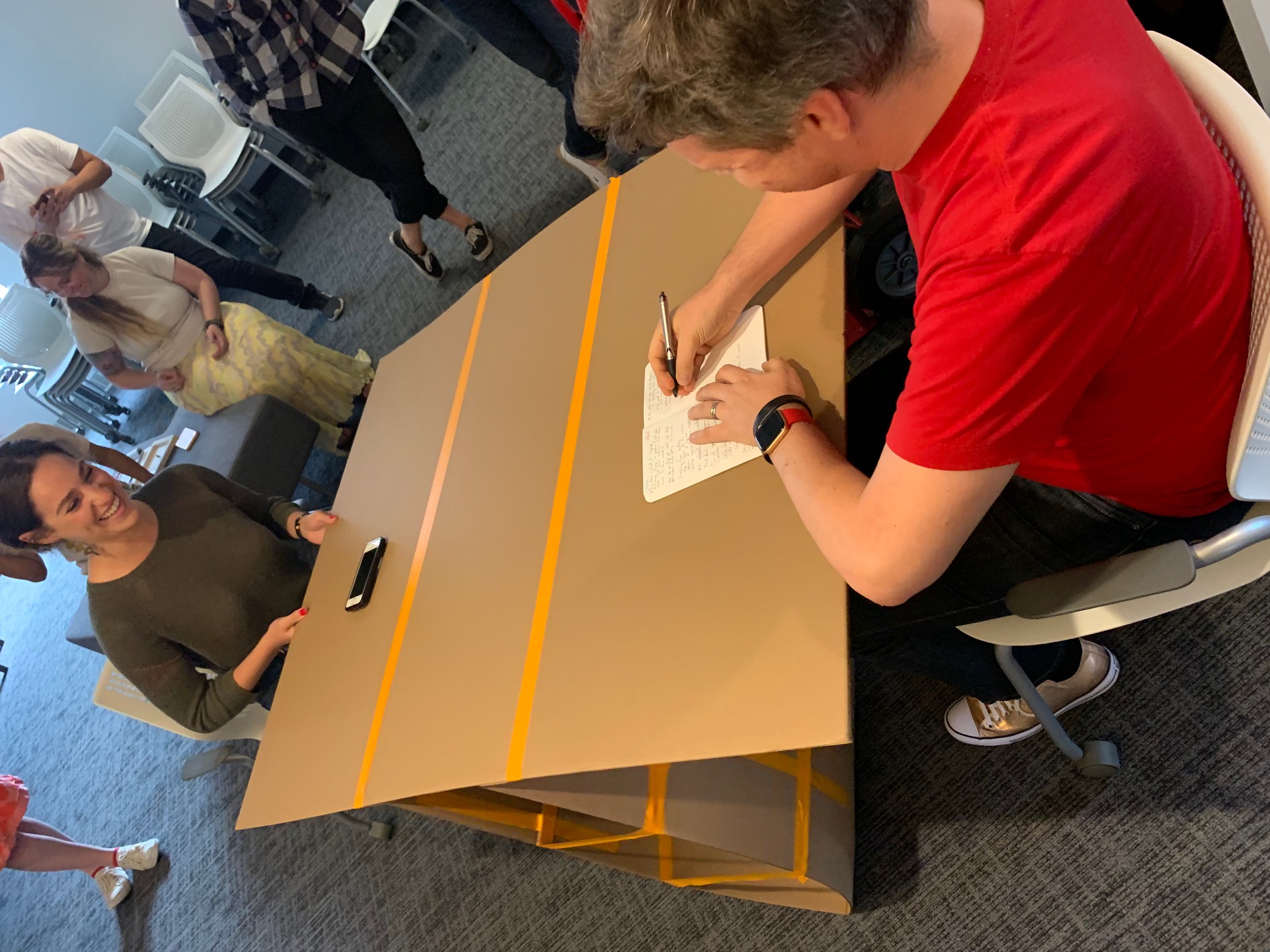
Arka Ghose, Cameron Peirce, and Francis Park

This table game requires the participation of two individuals on each end. By making this table unbalanced, participants had to cooperate in order to achieve balance.
The person on the right side of the table is using applying more force which creates an uncooperative situation.
The person on the left is trying to eat. But, being that the table is titled more to this person cooperation is unbalanced. In order to create balance the person on the right has to apply pressure to the table.
How does cooperation work?
Develop working definition of “cooperation” and prototype a model to investigate it.
We were inspired by the seesaw! To successfully operate it, two individuals need to input energy and pay attention to each other’s cues. With this in mind, we defined cooperation as two or more entities interacting to influence the friction — the struggle or resistance — inherent in achieving a goal.
For our model we wanted to design something that is only functional when two people use it and demonstrates the role of friction. Similar to the seesaw, we built a table that could only be balanced with two people sitting down. Each person needs to use their thighs and arms to apply pressure and experience friction to balance out the table. When the table is balanced, the top surface becomes functional.
When two people use the table they are actively participating to influence the friction of a shared goal, which is our definition of cooperation.